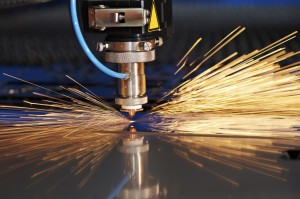Are you wondering if your medical device manufacturing company would be eligible for R&D tax  credits? Find out and read some SR&ED examples from the medical device manufacturing industry in this article.
credits? Find out and read some SR&ED examples from the medical device manufacturing industry in this article.
Normal operations within the medical device manufacturing industry often involve research or experimentation that could qualify for R&D funding or tax credits such as Scientific Research & Experimental Development (SR&ED).
Research and experimentation in this industry includes the development or improvement of products or manufacturing processes in a variety of forms as well as the development of products with specific and unique features. Some general examples of industry specific projects potentially eligible for SR&ED are:
- Attempted to develop new or improved products or manufacturing processes
- Developed or improved devices to advance safety and efficacy of the device
- Conducted clinical trials on the device to gain information on how the device interfaces with humans and provide feedback on the safety and efficacy of the device
- Advanced science or technology in the work that you do
- Developed prototypes for evaluation and testing internally or by other health professionals including hospitals
- Developed an R&D department or lab that is involved in new product development
- Kept records of the systematic R&D work that you do
- Systematically developed new or improved products using industry feedback involving multiple approaches or prototypes, followed by testing, product design changes, additional prototypes, and subsequent testing over the development period
Medical device SR&ED example
A manufacturing company, who makes complex medical devices, wanted to speed up their line to reduce the per item completion time. They had three research questions which needed exploration. The first concern was a reduction in the quality of the equipment being made as instrument accuracy has to be exact. The second was to improve the performance of one of their mobile units during times when the weather temperature was really hot or cold. They also had a chemical reaction issue with one of their machines due to outside airborne elements.
After over a year of R&D they were able to resolve both the chemical reaction and weather temperature issues. They are still working on trying to speed up the production line. A SR&ED claim was successfully submitted for all three of their R&D projects, in the amount of $143,000, even though the production speed up process to date has not been accomplished.
Advice for claiming SRED
The SR&ED claim process is complex and requires a deep understanding CRA rules and how they are practically applied.
Inexperienced SRED claimants often do not know how to keep proper records and notes – either under or overdoing it. Although proper documentation is required, it is also very specific. Too much documentation of the wrong information is a poor way to spend valuable time and resources. Getting mired in documentation and report writing for weeks and months at a time to can negate the value of the tax credits being recovered.
Also common is for organizations to document projects that turn out to be ineligible for SR&ED. Being clear which projects or parts of projects are eligible for SR&ED at the outset is critical to utilizing resources appropriately.
Get experience on your side
With time and accumulated experience, SR&ED advisors develop a full understanding of the claim process and the documentation necessary to support and successfully defend a claim in the event of a CRA audit.
Enhanced Capital Recovery offers a complimentary claim and project review service. We can offer insight into issues, or at the very least, confirm that you are receiving the best possible return for your company. Contact us for a free evaluation today!


